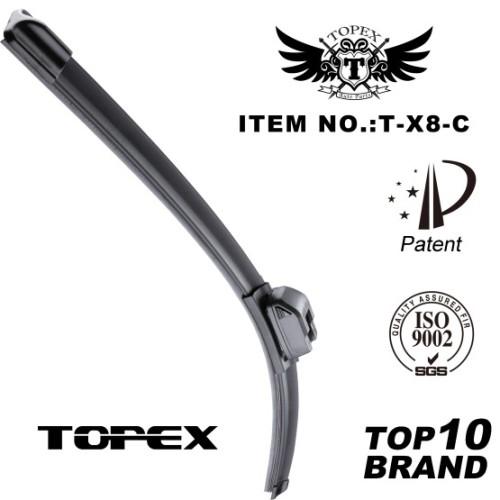Wiper blades may seem like a small component of your vehicle, but they play a crucial role in ensuring clear visibility during inclement weather conditions. Whether it's rain, snow, sleet, or debris on the windshield, having the right wiper blades can make a significant difference in driving safety. This essay explores the factors to consider when choosing the right wiper blade for your vehicle to maintain optimal visibility and driving comfort.
Understanding Wiper Blade Types
Before diving into the selection process, it's important to understand the different types of wiper blades available:
Traditional Bracket Blades: These are the most common wiper blades with a metal frame and rubber blade. They are suitable for most weather conditions and offer reliable performance.
Beam Blades: Also known as frameless blades, these blades feature a sleek, one-piece design without external metal frames. Beam blades provide uniform pressure across the windshield, reducing streaks and ensuring consistent wiping.
Hybrid Blades: Combining elements of traditional bracket blades and beam blades, hybrid blades offer improved aerodynamics, durability, and performance in varying weather conditions.
Winter Blades: Designed specifically for harsh winter conditions, these blades feature a rubber covering or protective shell to prevent ice buildup and maintain flexibility in freezing temperatures.
Factors to Consider
Vehicle Compatibility: Wiper blades come in various sizes, and it's crucial to choose blades that are compatible with your vehicle's make, model, and year. Consult your vehicle owner's manual or use a blade size lookup tool provided by manufacturers or retailers.
Weather Conditions: Consider the typical weather conditions in your area. If you experience heavy rainfall, snow, or ice frequently, opt for blades designed for such conditions, such as beam blades or winter blades with special coatings or features.
Blade Material: Look for high-quality rubber or silicone blades that offer durability, flexibility, and resistance to UV rays and harsh weather elements. Premium materials ensure longer blade life and consistent wiping performance.
Wiping Performance: Evaluate the blade's wiping performance, including smoothness, streak-free wiping, noise levels, and coverage across the windshield. Beam blades and hybrid blades often provide superior wiping performance compared to traditional bracket blades.
Ease of Installation: Choose wiper blades that are easy to install and compatible with your vehicle's wiper arm attachment mechanism. Many modern wiper blades come with pre-installed adapters for quick and hassle-free installation.
Brand Reputation and Reviews: Consider reputable wiper blade brands known for quality, durability, and customer satisfaction. Read customer reviews and ratings to gather insights into real-world performance and longevity.
Maintenance and Replacement
Regular maintenance and timely replacement of wiper blades are essential for optimal performance. Inspect your wiper blades periodically for signs of wear, such as cracking, splitting, or reduced flexibility. Clean the blades and windshield regularly to remove dirt, debris, and residue that can affect wiping efficiency. Replace wiper blades at least once a year or sooner if you notice streaking, skipping, or reduced visibility during use.
Conclusion
Choosing the right wiper blade for your vehicle involves considering a variety of factors, such as blade type, size, material, performance, and compatibility with the driving environment. Investing in high-quality wiper blades that are suitable for your vehicle and weather conditions ensures clear visibility, safe driving and increased driving comfort, especially in adverse weather conditions.
Regular maintenance and timely replacement of wiper blades are equally important to maintaining visibility and extending the life of your windshield wipers. If you have any questions about our products, please feel free to contact us.
